Numerical simulation of quark-gluon plasma formed in the collision of two gold atoms.
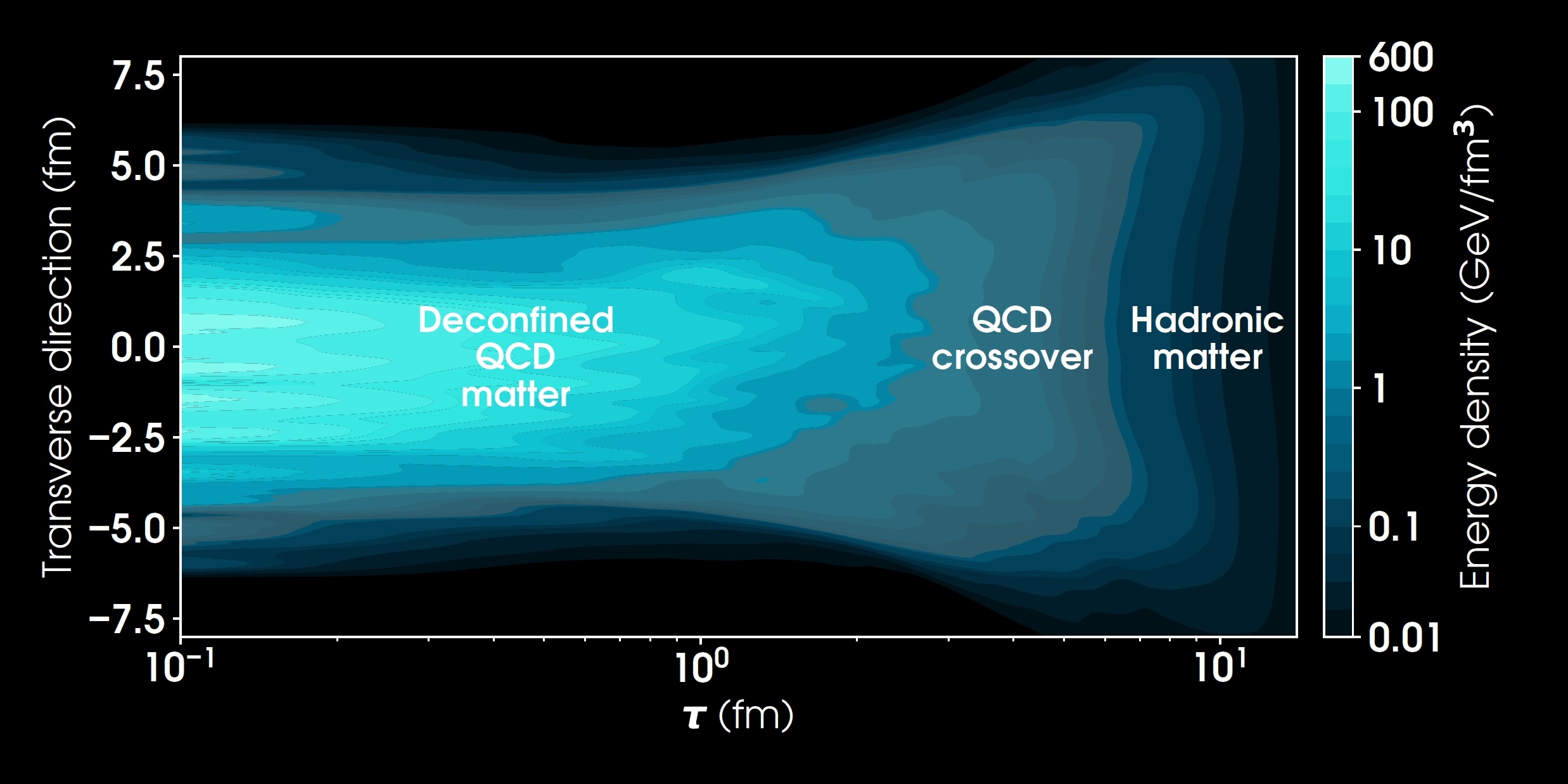 Calculations used to produce this figure are from
this
work.
Calculations used to produce this figure are from
this
work. [ jean-francois.paquet@vanderbilt.edu ]
Assistant Professor of Physics and Mathematics
 Calculations used to produce this figure are from
this
work.
Calculations used to produce this figure are from
this
work. 
Quarks and gluons are fundamental building blocks of matter. Their interactions are governed by Quantum Chromodynamics, one of the core parts of the Standard Model of particle physics.

Quark-gluon plasma can now be produced in laboratory, by colliding large nuclei at velocities close to the speed of light. The two colliders that can achieve this feat are the Relativistic Heavy Ion Collider at Brookhaven National Laboratory (New York) and the Large Hadron Collider at CERN (Switzerland/France).
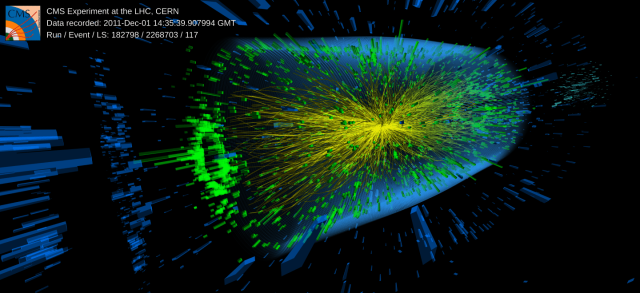
Quark-gluon plasma is never seen directly: its existence and properties must be inferred from the shower of subatomic particles that hits the detector (image on the right). I study the properties of quark-gluon plasma using multi-stage numerical simulations whose core is relativistic viscous fluid dynamics.
I also use Bayesian inference to quantify the properties of quark-gluon plasma with reliable uncertainties. The specific shear viscosity of quark-gluon plasma is among the smallest ever measured in a liquid (an honour shared with cold atomic gases); it is orders of magnitude smaller than that of liquid helium, for example.
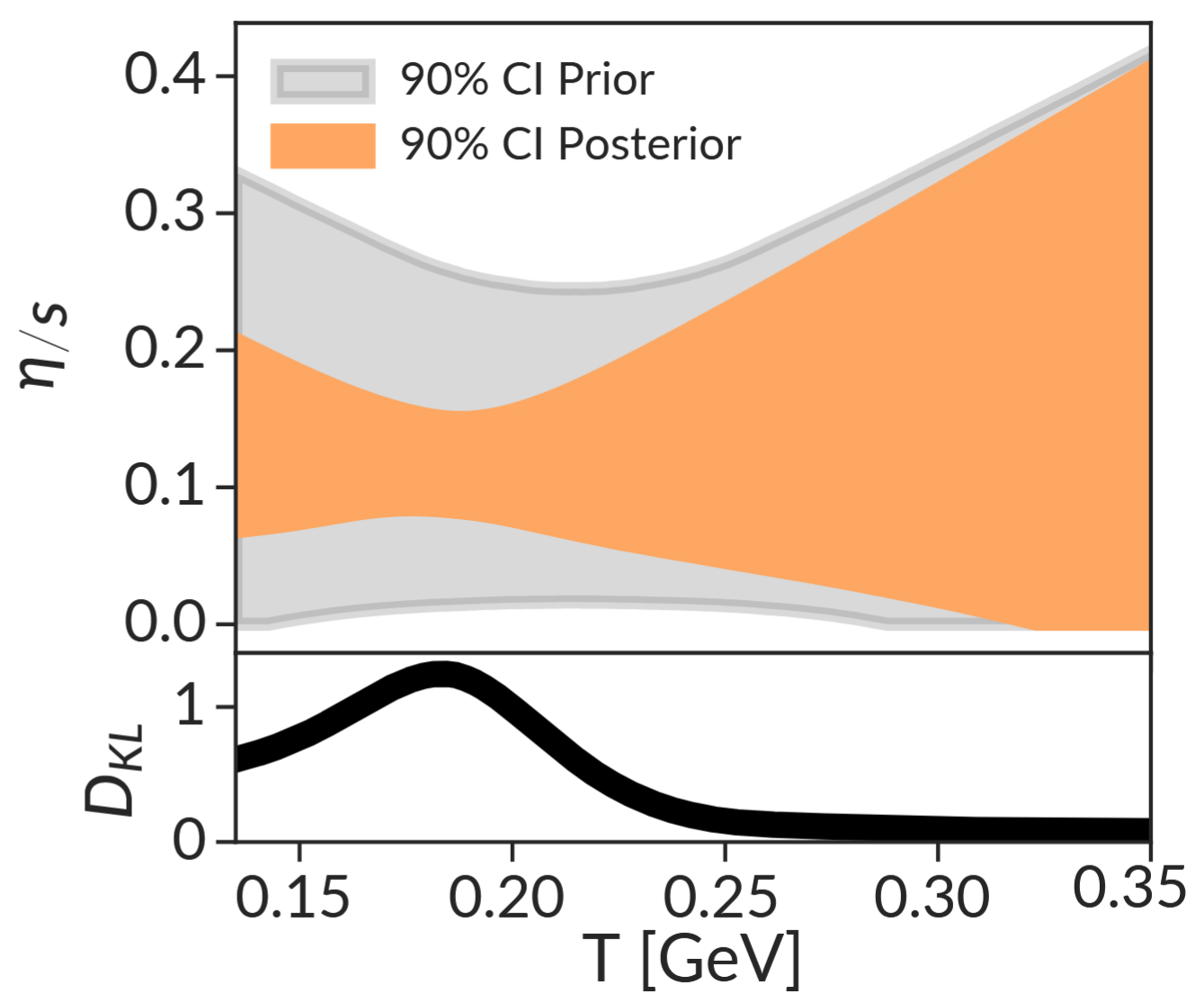
The figure on the left shows a recent constraint on the specific shear viscosity η/s of quark-gluon plasma as a function of the plasma's temperature (the orange band is a Bayesian model average, the bottom panel is the posterior-prior Kullback–Leibler divergence). This result is the product of a multi-institution collaboration, obtained from millions of core-hours of calculations on US supercomputers.
While the viscosity of strongly-coupled quark-gluon plasma is famously difficult to calculate, the long-term objective is to find agreement between measurements of the viscosity and ab initio calculations.
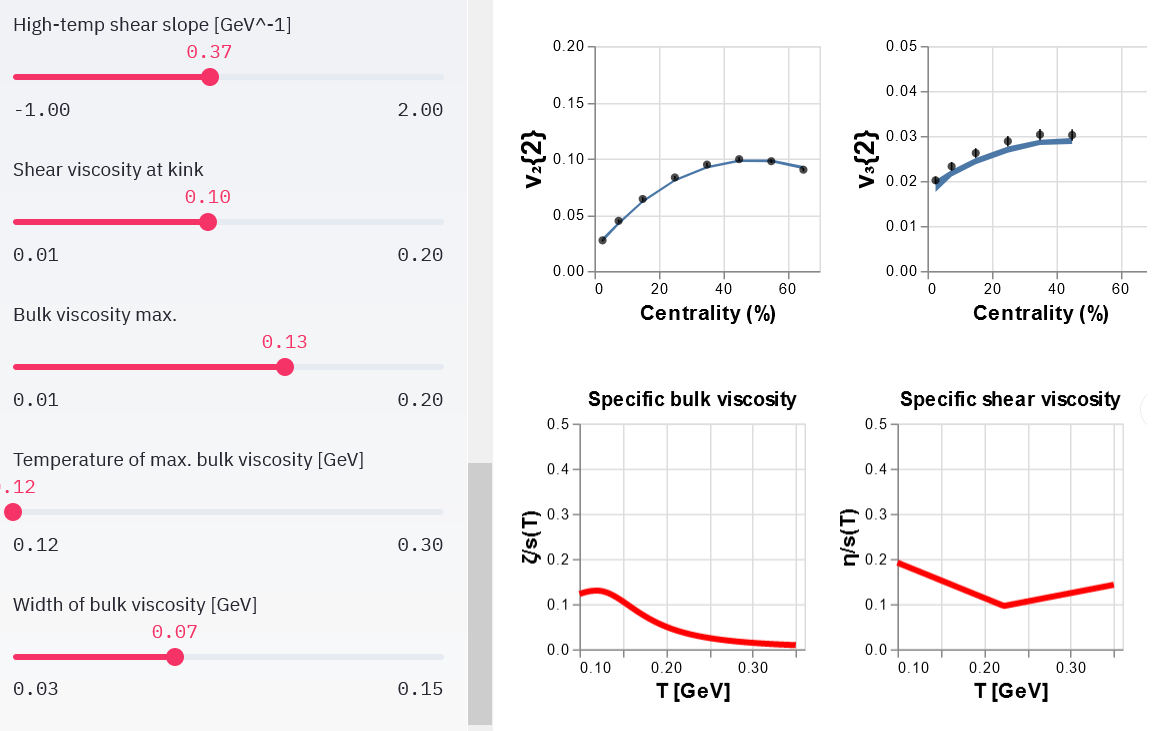
On the right is an app that we made to visualize the results of the effect of the shear and bulk viscosity of quark-gluon plasma. The points in the figures are measurements from the Large Hadron Collider. The sliders on the left are all the parameters of the models that must be constrained by comparison with measurements. Half of these parameters are used to vary the temperature dependence of the shear and bulk viscosity.
I also study 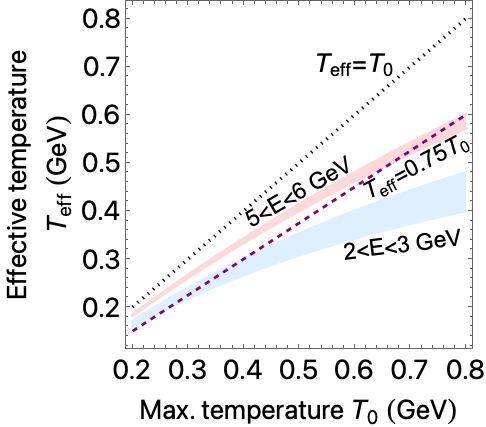 the production of photons by the quark-gluon plasma. Because the quark-gluon plasma produced in nuclear collisions is small, photons can escape with negligible rescattering, and they can be used to probe deep into the hottest and densest parts of the plasma. Recently, I have used analytical solutions of relativistic fluid dynamics (the "Gubser solution") to better understand the relation between the energy spectrum of photons, the temperature of the plasma and the Doppler shift on photons resulting from the plasma's expansion. The figure on the left shows the relation between the actual maximum temperature of the plasma and the apparent ("effective") temperature extracted from the photon spectrum in different energy ranges.
the production of photons by the quark-gluon plasma. Because the quark-gluon plasma produced in nuclear collisions is small, photons can escape with negligible rescattering, and they can be used to probe deep into the hottest and densest parts of the plasma. Recently, I have used analytical solutions of relativistic fluid dynamics (the "Gubser solution") to better understand the relation between the energy spectrum of photons, the temperature of the plasma and the Doppler shift on photons resulting from the plasma's expansion. The figure on the left shows the relation between the actual maximum temperature of the plasma and the apparent ("effective") temperature extracted from the photon spectrum in different energy ranges.
Reach out if you are interested in an undergraduate research project: jean-francois.paquet@vanderbilt.edu
PHYS 8010: Particle and Continuum Mechanics

Introduction to Fluid Dynamics (for nuclear collisions)

Too few people have had the chance to watch this series of videos
from 1961: https://web.mit.edu/hml/ncfmf.html
See
for example, Sir G.I. Taylor himself explain [non-relativistic]
fluid dynamics at low Reynolds numbers.
These videos are a reminder of the decades of experimentation it took to
establish the foundations of non-relativistic fluid dynamics.
A complete list of my publications is available on INSPIRE [ INSPIRE profile ], with links to the published
versions and the (free) arXiv versions. Google Scholar is also eerily good at finding
my work.
In the summer of 2018, I wrote a manual for the heavy-ion
hydrodynamic simulation code MUSIC as support
material for lectures I gave at a workshop at the University of São
Paulo. Since then, a new
official version of MUSIC has been published, and I updated
the manual accordingly for this new version: here.
The older
version of MUSIC is still usable, of course; its manual
remains available here.
While it is MUSIC-oriented, the manual should provide a good
overview of the physics behind hydrodynamic simulations of heavy-ion
collisions in general.
We use relativistic viscous fluid
dynamics to describe the spacetime expansion of quark-gluon plasma.
MUSIC is a full 3+1D code developed in McGill that has been widely
used by us and others to study heavy-ion collisions.
The official website is http://www.physics.mcgill.ca/music/.
The latest version of the code is available here: https://github.com/MUSIC-fluid/MUSIC/
A legacy version of the code is hosted on Sourceforce: https://sourceforge.net/projects/music-hydro/.
In 2018, I wrote a manual for the code, which I have updated since
to keep up with changes in the code: https://webhome.phy.duke.edu/~jp401/music_manual/
A few highlights:
Jean-François Paquet
[ jean-francois.paquet@vanderbilt.edu ]